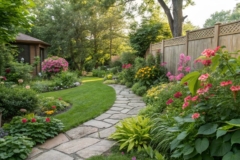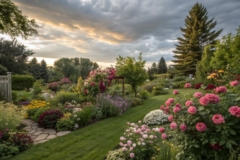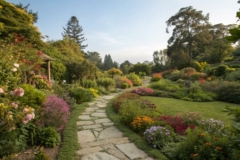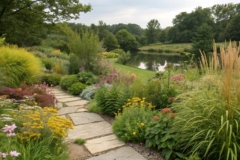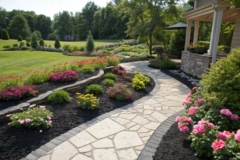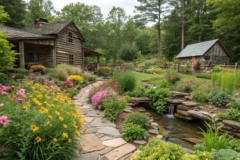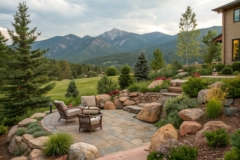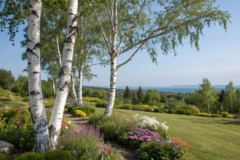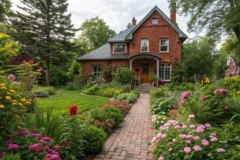1. Building a Herb Spiral

An herb spiral is a compact, efficient way to grow a variety of herbs. Mine saves space and adds an interesting architectural feature to my garden.
A few relevant products:
- Garden Spiral Kit: Easily construct your herb spiral with this user-friendly garden spiral kit. Perfect for beginners.
- Organic Herb Seeds Assortment: Start growing your favorite herbs with this diverse, organic seed collection. Ideal for any gardener.
- Watering Can with Sprinkler Head: Keep your herb spiral hydrated using this efficient watering can with a gentle sprinkler head.
2. Mixing Perennials and Shrubs

In my own backyard, I’ve found that combining perennials like daylilies with shrubs such as spirea creates a lush, layered look. These plants thrive in Zone 8 and offer a symphony of colors and textures.
Some ideas to consider:
- Mixed Daylily Bulbs: Add vibrant daylilies to your garden for lasting color and easy maintenance in Zone 8.
- Spirea Shrub Starter Plants: Enhance your landscape with stunning spirea shrubs offering beautiful blooms and colorful foliage.
- Colorful Perennial Plant Collection: Diversify your garden with a mix of colorful perennials to create lush, layered landscapes.
3. Embracing Residential Settings
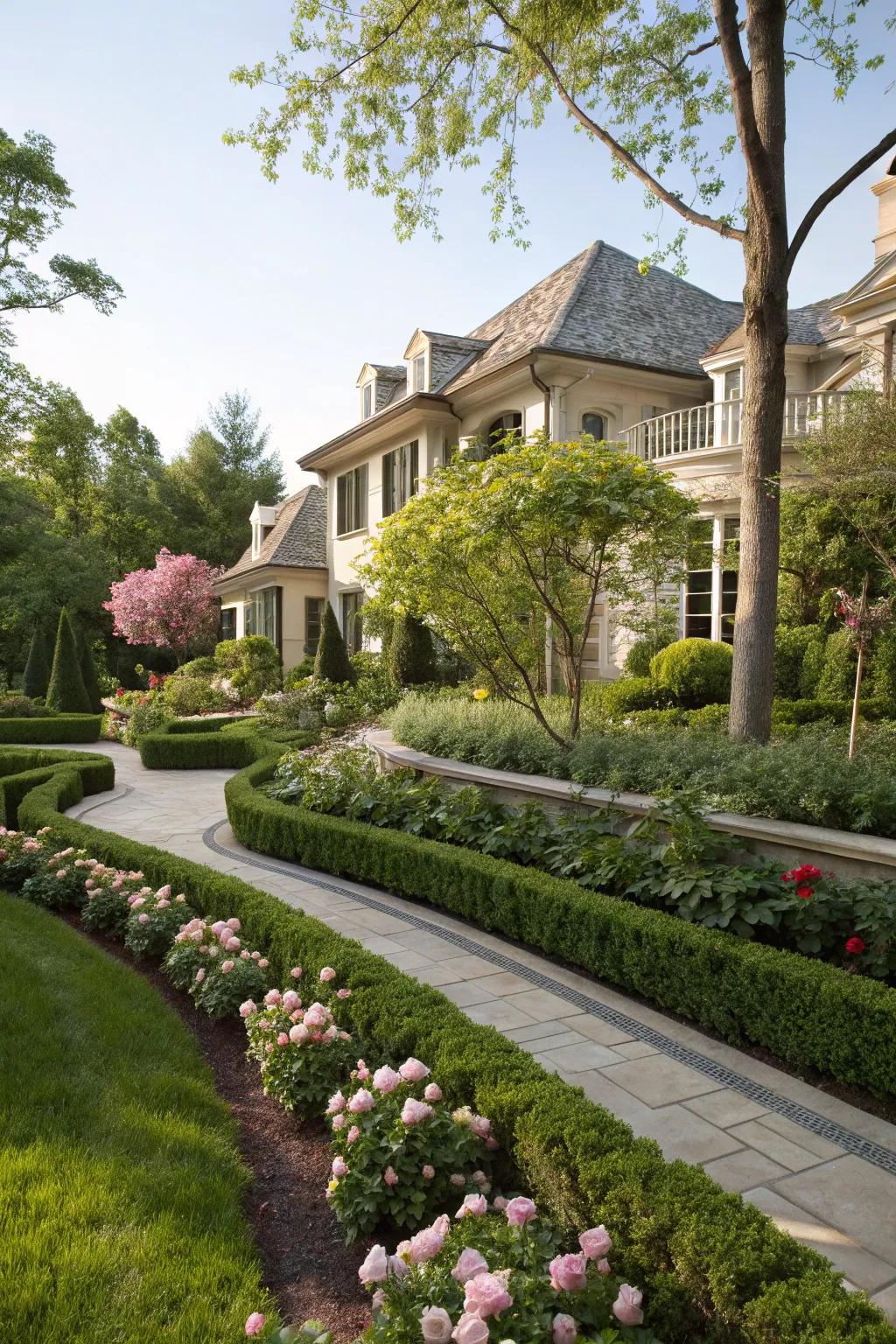
Tailoring your landscape to fit your home’s style can create a seamless look. Whether modern or traditional, your garden should feel like a natural extension of your living space.
You might like:
- Outdoor Solar Pathway Lights: Illuminate your garden path with eco-friendly solar lights for a beautiful evening ambiance.
- Decorative Garden Edging: Define your garden borders with stylish edging to enhance your landscape’s clean look.
- Weather-Resistant Patio Furniture Set: Add comfort to your outdoor space with a durable and elegant patio furniture set.
4. Creating Curb Appeal with Pathways

A well-designed pathway can transform your front yard into a welcoming entrance. I love using stone or brick paths that gently guide visitors to the front door, adding both functionality and charm.
Maybe worth checking out:
- Natural Stone Pavers: Enhance your garden path’s elegance with durable, stylish natural stone pavers. Perfect for any pathway.
- Outdoor Pathway Lighting: Illuminate your path with attractive, energy-efficient lighting for a welcoming evening ambiance.
- Garden Edging Borders: Define and beautify your paths with flexible, easy-to-install garden edging borders.
5. Enhancing with Water Features

A water feature can add a soothing element to your garden. I’ve installed a simple fountain near my seating area, and the gentle sound of water is a delightful backdrop.
Items that may come in handy:
- Outdoor Garden Fountain: Elevate your garden with a stunning fountain, creating a tranquil and soothing ambiance.
- Solar Water Pump Kit: Harness the power of the sun to effortlessly maintain a serene and eco-friendly water feature.
- LED Fountain Lights: Illuminate your water feature with LED lights, adding charm and elegance to your garden space.
6. Using Mulch for Texture and Health

Mulch not only helps retain moisture but also adds texture to your garden beds. I’ve found that a layer of bark mulch complements my plants beautifully.
Some handy options:
- Natural Bark Mulch: Enhance your garden’s aesthetics by adding rich texture and moisture retention with natural bark mulch.
- Cocoa Shell Mulch: Add an organic layer to your garden that enriches soil and suppresses weed growth effectively.
- Cedar Mulch: Use cedar mulch for a fragrant and long-lasting solution that deters insects and enhances plant health.
7. Including Edible Landscaping
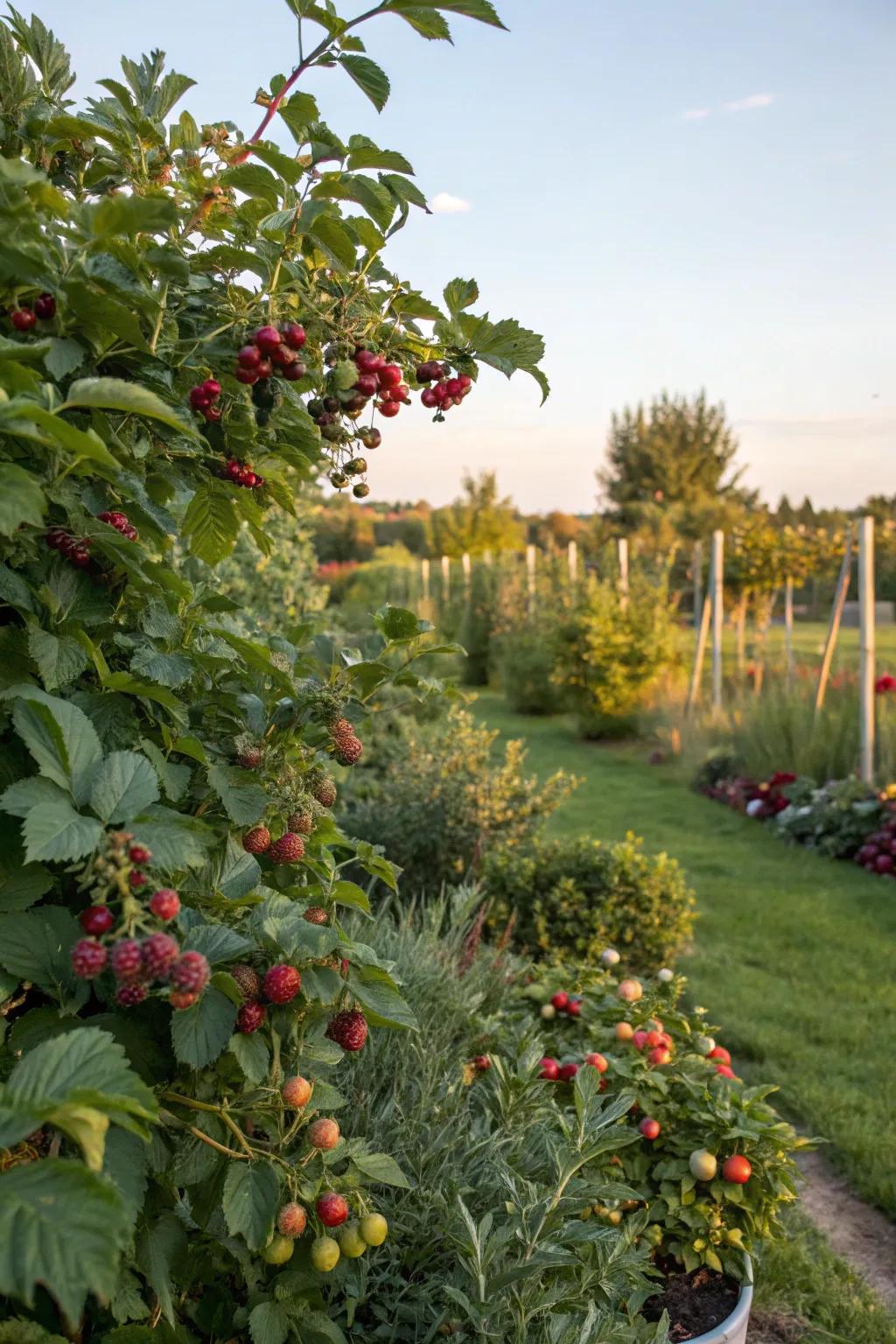
Why not enjoy fresh produce straight from your garden? I’ve incorporated edible plants like berry bushes and fruit trees, adding both beauty and bounty.
Products that could assist:
- Berry Bush Starter Kit: Easily grow delicious berries in your garden with this beginner-friendly berry bush starter kit.
- Fruit Tree Fertilizer Spikes: Enhance your fruit trees’ growth with these easy-to-use, nutrient-rich fertilizer spikes.
- Garden Landscape Fabric: Maintain a weed-free edible garden effortlessly with durable landscape fabric. Perfect for berry bushes.
8. Incorporating Seating Areas

A cozy seating area amidst your garden is perfect for relaxation. In my backyard, I’ve nestled a small bench under a magnolia tree, offering a serene spot to unwind.
Possibly helpful picks:
- Wooden Garden Bench: Enhance your garden retreat with a classic wooden bench for ultimate relaxation.
- Outdoor Weather-Resistant Cushions: Add comfort and style to your garden bench with weather-resistant cushions.
- Garden Solar Lanterns: Create a magical evening ambiance with charming garden solar lanterns.
9. Choosing Native Plants

Native plants are adapted to local conditions, making them a smart choice for Zone 8 gardens. They’re hardy, require less water, and support local wildlife, like the native grasses I’ve added to my landscape.
You might give these a try:
- Native Grass Seed Mix: Transform your garden with native grass seed mix tailored for Zone 8 climates effortlessly.
- Drought-Resistant Perennial Plants: Enhance your landscape with hardy perennials that thrive in Zone 8’s unique conditions.
- Wildflower Seed Packets: Add vibrant colors to your garden with easy-to-grow native wildflower seed varieties.
10. Adding Natural Elements

Incorporating natural materials like stones and mulch can add texture and depth to your garden. I often use river stones around flower beds to create a natural, cohesive look.
Try these:
- Decorative River Stones: Enhance your garden’s look using decorative river stones to add texture and depth effortlessly.
- Natural Cedar Mulch: Improve soil moisture and compliment your plant beds with natural cedar mulch.
- Garden Landscape Fabric: Use garden landscape fabric to prevent weed growth while allowing water and nutrients through.
11. Opting for Low-Maintenance Gardens

If you’re like me and prefer spending time enjoying your garden over maintaining it, choose low-maintenance plants. Drought-tolerant species like lavender and succulents thrive here with minimal care.
A few helpful options:
- Drought-Tolerant Plant Seeds: Plant these drought-tolerant seeds and enjoy a flourishing garden with minimal watering effort.
- Automatic Drip Irrigation Kit: Install a drip irrigation kit and maintain consistent moisture levels with minimal intervention.
- Decorative Garden Mulch: Add mulch to your garden to conserve moisture and reduce the need for frequent watering.
12. Planting a Colorful Border
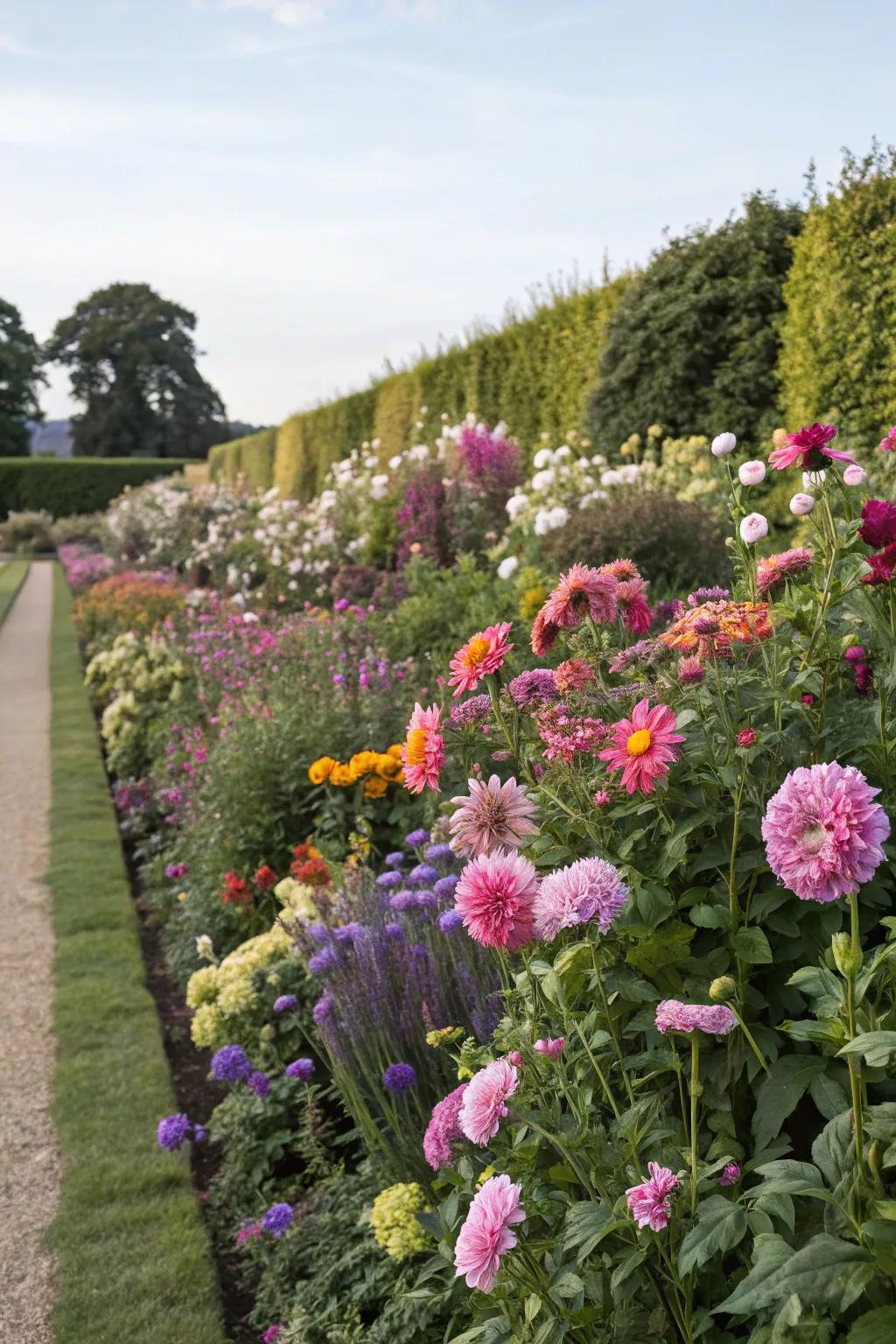
Imagine a border of vibrant flowers lining your garden, creating a stunning visual impact. In my garden, I’ve used plants like lantana and coneflower, which flourish in Zone 8’s climate.
Check these products out:
- Perennial Flower Seed Mix: Transform your garden with vibrant, easy-to-grow perennials perfect for creating stunning borders.
- Garden Border Edging: Define your flower borders efficiently with durable, elegant garden edging solutions for a polished look.
- Gardening Soil for Flowers: Boost your flowers’ growth with nutrient-rich soil tailored for vibrant, healthy blooms in Zone 8.
13. Creating a Zen Garden

A Zen garden can be a peaceful retreat right in your backyard. I’ve used gravel, simple stones, and a few well-placed plants to create a calming oasis.
May just do the trick:
- Zen Garden Rake Set: Enhance your garden’s peaceful appeal with a versatile rake set for perfect gravel patterns.
- Decorative Garden Stones: Add character to your Zen garden with natural stones, creating balance and harmony.
- Japanese Maple Tree: Introduce elegance and vibrant color to your Zen landscape with a delicate maple tree.
14. Designing a Color-Themed Garden

A color-themed garden can be striking and cohesive. I’ve experimented with different palettes; a blue and purple scheme is my current favorite for a calming effect.
Explore these options:
- Blue and Purple Flower Seed Mix: Transform your garden with vibrant blue and purple blooms, creating a serene outdoor oasis.
- Garden Path Lighting: Illuminate your stunning color-themed garden pathway with elegant and energy-efficient lighting options.
- Decorative Garden Planters: Enhance your garden’s elegance with stylish planters perfect for showcasing colorful flowers.
15. Designing with Garden Layout Plans
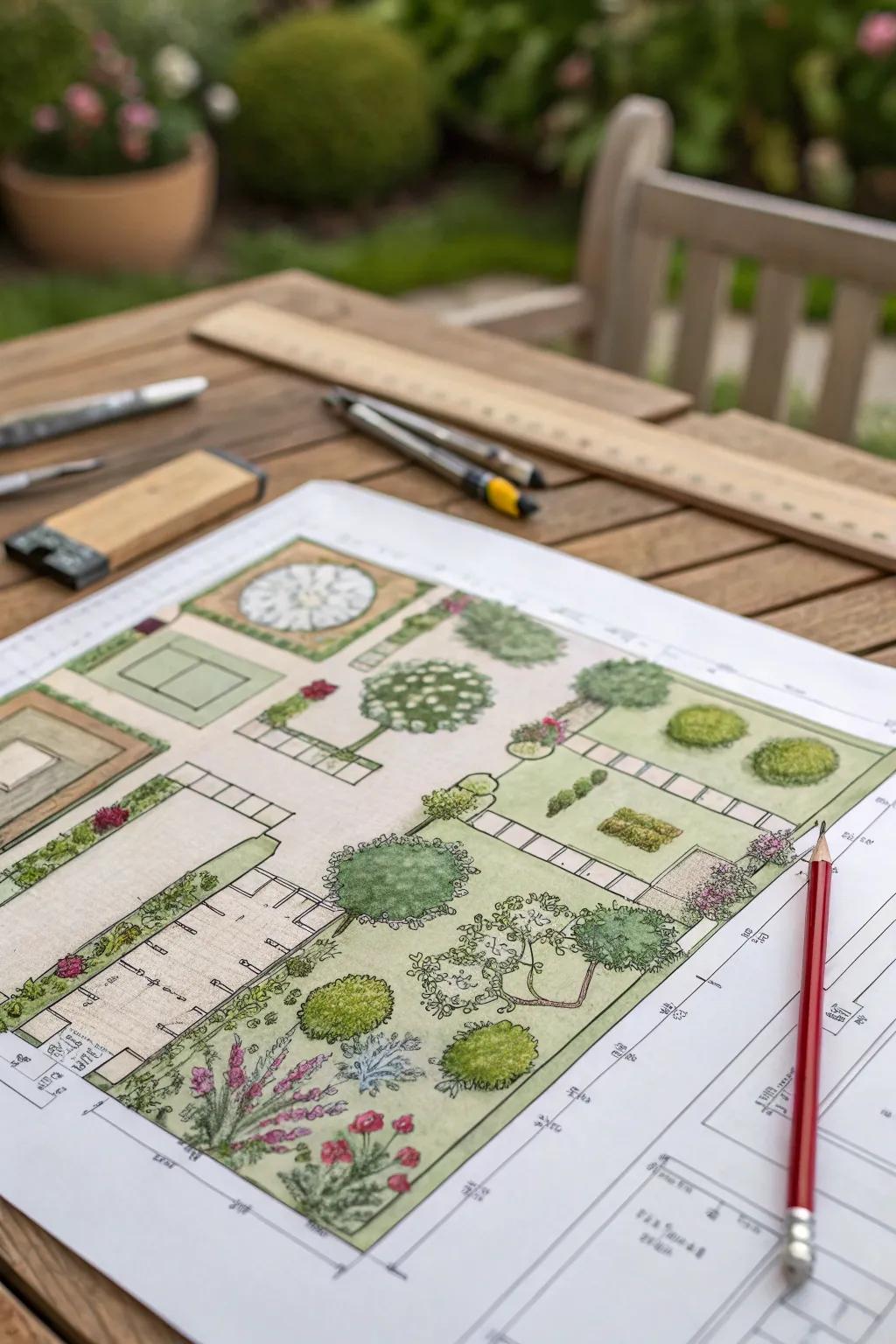
Drafting a garden layout plan can be an inspiring first step. I often sketch my ideas on paper, arranging plant placements and structures to visualize the final look.
A few things you might like:
- Garden Planning Sketchbook: Get inspired and organize your garden design ideas in this versatile planning sketchbook.
- Landscape Design Ruler Set: Perfect your garden layouts with precision using this comprehensive ruler and stencil set.
- Drawing Pencil Set for Landscape Design: Enhance your garden sketches with this premium set of drawing pencils for professionals.
16. Incorporating Seasonal Plants

By planting seasonal varieties, you can enjoy a garden that evolves throughout the year. I love the anticipation of new blooms, from spring daffodils to fall asters.
Give these a look:
- Seasonal Flower Bulb Assortment: Plant an assortment of seasonal bulbs to enjoy ever-changing blooms throughout the year.
- Perennial Seed Collection: Cultivate perennial plants that provide vibrant colors from spring to fall in your garden.
- Garden Planner Journal: Track seasonal changes and plan your garden’s evolution with a detailed garden planner.
17. Integrating Vertical Gardens

Vertical gardens are a fantastic solution for small spaces. I’ve built a few in my yard using trellises and wall planters, perfect for herbs or trailing plants.
A few suggestions:
- Modular Wall Planter System: Create a lush vertical garden on any wall. Easy to install and maintain.
- Stackable Herb Garden Planters: Grow fresh herbs easily with stackable planters. Perfect for maximizing small spaces.
- Metal Trellis for Climbing Plants: Support your climbing plants with a durable metal trellis. Ideal for outdoor vertical gardens.


